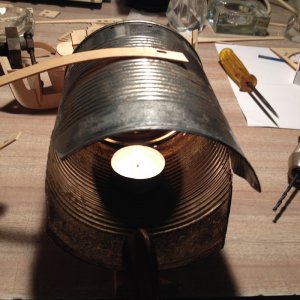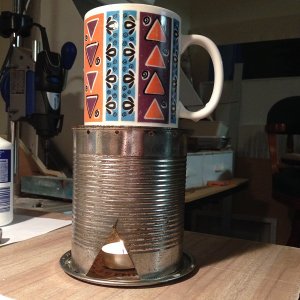I know I will not convince any of you, plank wetters or plank heaters, but on my current model, I do all my bending with my devoted Amati nipper. It is fairly quick, I don't burn or boil my fingers, and I don't spill water over the floor. Also, the terrible "dead cow effect" which happens when (mainly first planking) planks are glued in place when still wet, is something I don't have to care about.
I send a few pics: on one of them you see the well known tool with a plank ready to be glued in place. The 2 other pics speak for themselves.
1/ a thorough sanding/filling session still has to be done;
2/ the 6mm wide kit planks I was stupid enough to use for the 2nd planking. I wanted the planking to follow the ship's lines and of course they were way too wide and too stiff to allow pretty steep lateral bending. So I cut the planks lengthwise in two with a little jig of my own. As I hope can be seen, the plank nipper allows such bending too, with a little care of course;
3/ the "reverse" bending at the rear implied that I either soaked the planks which I did not want to do. As this part of the ship is under the waterline, I can always choose to paint it off white after filling up the nipper indents. I don't know, but the indents can be seen on the picture, and in my opinion tyhey are not too obvious and can be dealt with later on
4/ You may notice that the lower, part of the hull, still under construction, has a much better finish than the upper part. What I did is (of course) put a sufficient amount of white glue to the side of the planks, lay them down on the hull and sand the joint after removing the excess glue, thus before pinning down the plank. The idea is one I found on a French forum where a modeller said he used a mix of sanding dust and white glue to fill up any gaps in the planking, rather than wood filler, which never has the right colour.
In fact I still have to test with my tube of wood filler: the one I use is exactly the right colour when applied, but turns into a much paler brown when sanded. Tests will show if it gets dark enough after I apply the wood sealer.










